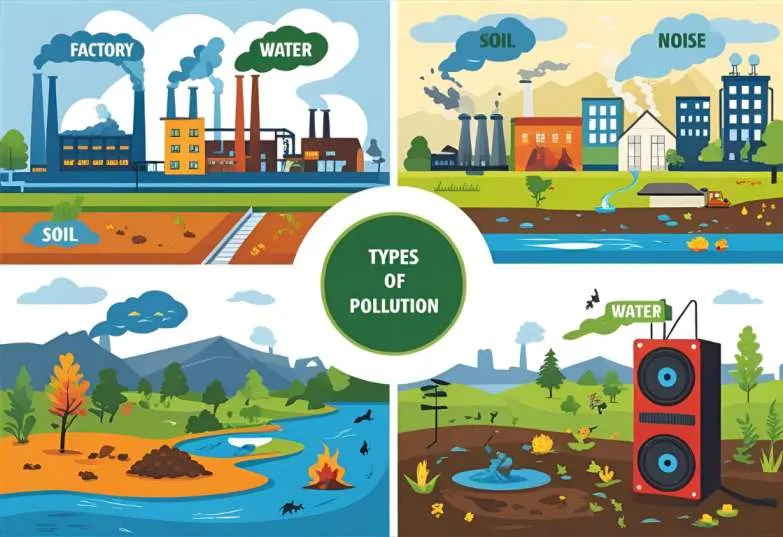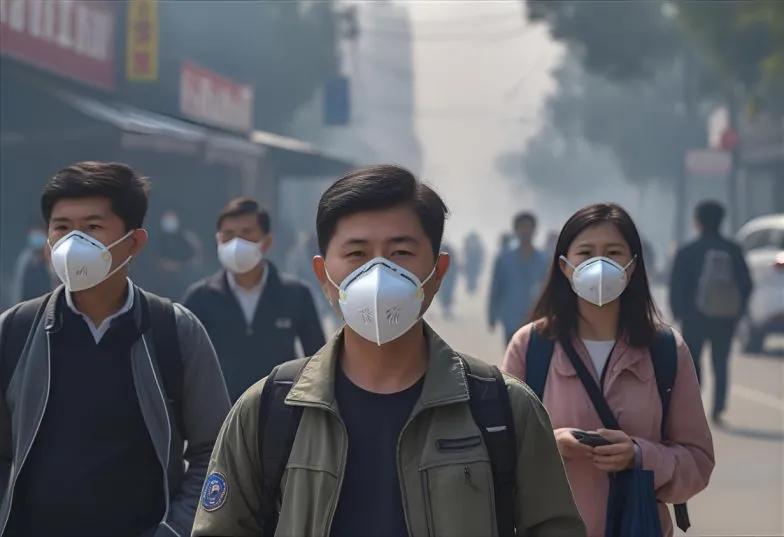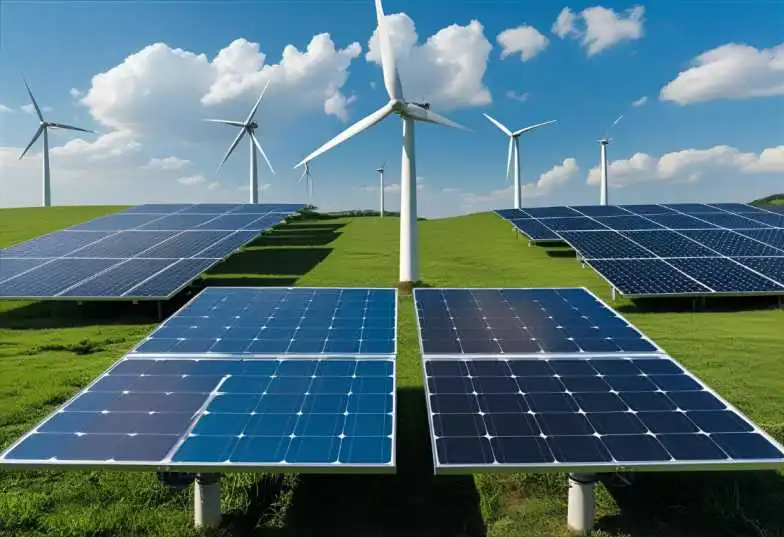Introduction
Have you ever stepped outside on a hazy morning and wondered why the air feels heavy or looks smoky? This isn’t just fog—it’s often smog, a dangerous form of air pollution that affects millions of people every day. At the same time, invisible chemicals called CFCs (chlorofluorocarbons) are quietly damaging our planet’s protective ozone layer, letting in harmful ultraviolet rays.
Which type of pollution includes CFCs and smog? The answer is air pollution, one of the most serious environmental threats we face today. From cities in India to towns around the world, air pollution is linked to health problems, climate change, and ecosystem damage.
In this guide, you’ll discover:
- What CFCs and smog are
- Why they matter to your health and the environment
- How governments and communities are fighting back
- Simple steps you can take to help reduce air pollution
Whether you’re a student, an eco-conscious beginner, or a sustainability professional, this article will give you clear, practical insights to make informed choices and inspire change.
Table of Contents
Understanding Pollution Types
Long before modern industries, pollution quietly shaped our environment and health. For decades, human activities have been releasing harmful substances into the environment. But before we dive deeper into CFCs and smog, it helps to understand what pollution really means and how it’s classified.

What Is Pollution?
Think of pollution as any unwanted guest—chemicals, particles, or noise—that disrupts nature’s balance and harms living beings. These troublemakers—pollutants—might be natural (like volcanic ash) or the byproducts of our lifestyles (like factory smoke and plastics). For example:
- Natural pollutants: Volcanic ash, pollen, dust
- Man-made pollutants: Smoke from factories, chemical waste, plastics
When pollutants build up beyond safe levels, they damage air, water, and soil, creating serious risks for people and wildlife.
Major Categories of Pollution
Pollution comes in many forms. Here are the four main types you should know:
- Air Pollution
- Definition: Contamination of the air by harmful gases, particles, or biological molecules.
- Examples: CFCs from old refrigerators, smog in big cities, vehicle exhaust.
- Why it matters: It causes breathing problems, contributes to climate change, and destroys the ozone layer.
- Water Pollution
- Definition: When harmful substances mix with rivers, lakes, or oceans.
- Examples: Industrial waste, sewage, oil spills.
- Why it matters: Polluted water affects drinking supplies and aquatic life.
- Soil Pollution
- Definition: The presence of toxic chemicals in the soil.
- Examples: Pesticides, heavy metals from factories.
- Why it matters: Contaminated soil reduces crop yield and harms animals.
- Noise Pollution
- Definition: Excessive or disturbing noise that disrupts normal life.
- Examples: Traffic noise, loud machinery.
- Why it matters: Long-term exposure can lead to stress and hearing loss.
So, which type of pollution includes CFCs and smog? You guessed it—air pollution. In the next section, you’ll learn exactly how these pollutants form and why they are so dangerous.
Air Pollution—The Culprit Behind CFCs and Smog
Air pollution is the main reason why CFCs and smog have become such serious threats to our health and the environment. But what exactly are these substances, and how do they get into the air? Let’s break it down.
What Are CFCs (Chlorofluorocarbons)?
CFCs, or chlorofluorocarbons, are man-made chemicals that were once widely used in:
- Refrigerators and air conditioners
- Aerosol spray cans
- Foam packaging
CFCs were popular because they are non-flammable, stable, and cheap to produce. Unfortunately, their stability means they stay in the atmosphere for decades.
Once released, CFCs slowly rise into the upper atmosphere. There, ultraviolet (UV) rays break them apart, releasing chlorine atoms. These chlorine atoms destroy ozone molecules, creating the ozone hole over Antarctica and thinning the ozone layer globally.
Why is this a big deal?
- The ozone layer protects us from harmful UV radiation that can cause skin cancer, cataracts, and weaken our immune systems.
- More UV rays reaching Earth also harm crops and marine life.
This is why many countries signed the Montreal Protocol in 1987, agreeing to phase out CFCs. Since then, ozone recovery has slowly begun.

What Is Smog?
Smog is a type of air pollution that looks like a thick, dirty haze hanging over cities. The word comes from combining smoke + fog. There are two main types:
- Industrial Smog
- Common in older industrial cities.
- When burning coal releases sulfur dioxide, which mixes with fog.
- Example: London’s “Great Smog” in 1952 killed thousands.
- Photochemical Smog
- Common in modern urban areas with lots of vehicles.
- When sunlight reacts with nitrogen oxides and volatile organic compounds (VOCs) from car exhaust.
- Produces ground-level ozone, a major health hazard.
In India, cities like Delhi, Mumbai, and Kolkata struggle with severe smog, especially in winter.
In simple words:
- CFCs destroy the ozone layer far above us.
- Smog creates toxic air right where we breathe.
Both are part of air pollution, and both have long-lasting effects if we don’t act.

How CFCs and Smog Affect Us
You might not see CFCs floating in the air or notice smog on some days, but both have serious impacts on human health and the environment. Let’s look at why these pollutants are so harmful.
Impacts on Human Health
Smog and ground-level ozone are especially dangerous because we breathe them directly. Here are some of the ways smog affects our health:
- Breathing problems: Smog can irritate your nose, throat, and lungs. People with asthma often have more attacks when the air quality is poor.
- Chronic illnesses: Long-term exposure can lead to bronchitis, reduced lung function, and even lung cancer.
- Eye irritation: Smog makes your eyes sting and water, causing discomfort in daily life.
- Heart issues: Research shows that polluted air can raise the risk of heart attacks and strokes.
CFCs, on the other hand, harm us more indirectly by damaging the ozone layer. When the ozone layer gets thinner, more UV rays reach Earth. This can lead to:
- Skin cancer: Higher UV exposure increases the risk of skin cancers, especially in fair-skinned people.
- Eye damage: UV radiation can cause cataracts, clouding the eye’s lens.
- Weakened immunity: Too much UV light can suppress the immune system, making it harder to fight infections.
Even if you feel healthy, living in areas with heavy smog or high UV levels increases your long-term risks.

Impacts on the Environment
Air pollution isn’t only a threat to people—it silently erodes the health of our entire planet. Here are a few examples:
- Climate change: Some air pollutants, like CFCs, are powerful greenhouse gases that trap heat and contribute to global warming.
- Harm to plants: Ground-level ozone damages crops, reducing food production.
- Wildlife: Extra UV radiation harms small organisms in oceans, disrupting the food chain.
- Material decay: Smog and acid rain can eat away at buildings, monuments, and infrastructure.
India and many other countries face these problems every day. From shrinking harvests to hotter summers, the effects of air pollution are all around us.
Recognizing these consequences is what empowers us to change course. Next, let’s explore what’s being done to fight CFCs and smog—and how you can help.
Solutions and What You Can Do
Air pollution might feel like an overwhelming problem, but there is good news: we already have proven solutions. From international agreements to small daily habits, everyone has a role to play in reducing CFCs and smog.
Global Efforts to Reduce Air Pollution
Governments and organizations worldwide have taken big steps to fight air pollution:
- The Montreal Protocol: Signed in 1987, this historic treaty phased out the production and use of CFCs. Thanks to this agreement, the ozone layer is slowly healing.
- Clean Air Acts: Many countries, including India, have laws limiting harmful emissions from industries and vehicles.
- Emission Standards: Stricter rules for car exhaust and industrial chimneys have helped reduce smog in some cities.
- Renewable Energy: Moving away from coal and diesel to solar, wind, and hydro power cuts pollution at the source.
These efforts show that when communities work together, real progress is possible.
How You Can Help
While big policies are essential, your everyday choices matter, too. Here are some simple actions you can take:
✅ Reduce CFC Use
- Avoid old air conditioners and refrigerators that may leak CFCs.
- Choose appliances with eco-friendly refrigerants (like R-134a or R-600a).
✅ Cut Down on Smog-Causing Activities
- Carpool, use public transport, or ride a bicycle instead of driving alone.
- Switch to electric vehicles if possible.
- Limit the use of diesel generators.
✅ Support Clean Energy
- Choose electricity providers that invest in renewable energy.
- Install solar panels if you can.
✅ Be a Smart Consumer
- Buy products with fewer chemicals and low VOCs (volatile organic compounds).
- Use eco-friendly paints and cleaning products.
✅ Raise Awareness
- Teach your friends and family about air pollution.
- Join community clean-air campaigns or tree-planting drives.
Remember, small steps add up. Even simple habits like turning off lights, recycling, or walking short distances instead of driving can make a difference.
Together, we can protect our health, restore the ozone layer, and create cleaner air for everyone.

Conclusion
Air pollution affects everyone, no matter where you live. From CFCs silently thinning the ozone layer to smog filling our cities with toxic air, these problems can feel impossible to solve. But as you’ve learned, air pollution is not just a scientific issue—it’s a human one.
By understanding which type of pollution includes CFCs and smog, you’re already one step ahead. You now know how these pollutants form, why they’re dangerous, and what can be done to stop them.
Remember, solutions start with action. Whether it’s supporting clean energy, reducing your car use, or simply spreading awareness, your choices matter. Governments, scientists, and communities have proven that when we work together, we can heal our atmosphere and protect future generations.
Let’s be part of that change. Start today by making one small adjustment to your lifestyle—and inspire others to join you. Cleaner air and a safer planet are within our reach if we act now.
Frequently Asked Questions (FAQs)
Which pollution includes CFCs?
Answer:
CFCs, or chlorofluorocarbons, are part of air pollution. They rise into the upper atmosphere and damage the ozone layer, which protects us from harmful UV rays.
What type of pollution causes smog?
Answer:
Smog is caused by air pollution, especially when vehicle exhaust, factory emissions, and sunlight react together to create ground-level ozone and fine particles.
Are CFCs still used today?
Answer:
Most countries have banned or strictly limited CFCs since the Montreal Protocol in 1987. However, some older refrigerators and air conditioners may still contain them.
How does smog affect human health?
Answer:
Smog can cause breathing problems, eye irritation, coughing, and heart issues. Long-term exposure increases the risk of lung disease and other health problems.
What’s the difference between smog and fog?
Answer:
Fog is just water vapor in the air and is usually harmless. Smog is dirty air pollution mixed with fog or haze, which makes it harmful to breathe.
How can we reduce smog in cities?
Answer:
We can reduce smog by:
Using public transport or carpooling
Switching to clean energy
Reducing industrial emissions
Planting more trees
Why is the ozone layer important?
Answer:
The ozone layer protects life on Earth by blocking most harmful UV radiation from the sun. Without it, people and animals would face higher risks of skin cancer and eye damage.
How do CFCs destroy the ozone layer?
Answer:
When CFCs reach the upper atmosphere, UV rays break them apart, releasing chlorine atoms. Each chlorine atom can destroy thousands of ozone molecules over time.
About the Author
Soumen Chakraborty is an environmental blogger and the founder of greenglobe25.in. He writes simple, research-backed guides on pollution, climate change, and sustainable living to help people make greener choices every day.
🌱 Ready to breathe cleaner air? Start by sharing this guide with your friends and family. Together, we can fight pollution and protect our planet for future generations.

